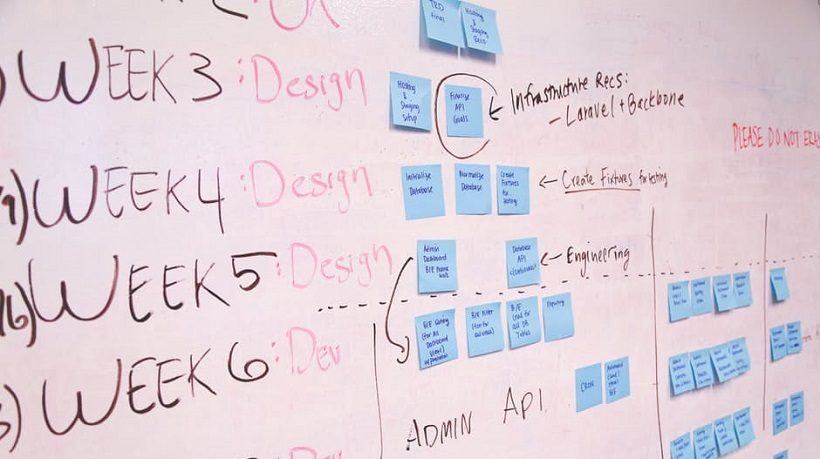Why Agile Culture In Your eLearning Organization Is Essential On So Many Levels
Agile eLearning organizations are characterized by several traits—competitiveness, dynamism, responsiveness—but an agile knowledge management pedagogy is always at the center of such institutions. And the key driving force behind this institutional knowledge management pedagogy is an agile culture of eLearning.
Understanding eLearning Organizations
The world of business has moved from being labor-intensive (a decade or two ago) to one that’s knowledge-driven. To survive and thrive in this highly competitive environment today it’s not enough for businesses to come up with innovative products and services. In fact, think tanks within most organizations do that every day! Organizational learning is the collective ability of an organization to create or learn new skills and knowledge to keep competition at bay. However, it’s not the business that comes up with a brilliant idea that’s successful, but the one that can quickly and efficiently bring that idea to market. What differentiates agile organizations is their ability to take organizational knowledge from those central cells (think tanks) and quickly disseminate it across the company. Another peculiarity of the eLearning organization is how they use every opportunity across the organization as a learning occasion. And then, whether it’s a failure or a success, having learned from the event, they are able to efficiently pass on “lessons learned” across the rest of the organization.
So, what does it take to create an agile culture like that?
Agile eLearning Culture Building Blocks
While anyone can send employees for agile training and rightly claim they are an “agile organization,” it takes more than training to inculcate a culture of agility. And because of time, distance and resource constraints it’s challenging to continue training momentum, especially if the organization is spread across broad geographies and time zones. That’s where companies can marry agile philosophies with eLearning principles to create a sound knowledge management culture.
Here are 5 building blocks to help you create an agile culture within your eLearning organization.
1. Make Knowledge Management One Of Your Top Priorities
There’s a difference between training and learning, and agile eLearning organizations excel at the latter. Agile learning empowers individuals across an organization to put training into practice. And in the process, they build even more knowledge and share it with others across the company.
Some agile knowledge management best practices that you might consider:
- Make frequent training mandatory across the company.
- Insist that training recipients create their own learning ecosystems to share freshly acquired knowledge.
- Hold company leadership accountable for capturing knowledge across key processes and events and disseminating it to all impacted/interested stakeholders organization-wide.
2. Leverage eLearning To Lend Agility To Knowledge Sharing
While organizations may excel at capturing institutional knowledge locally, they often lack dexterity in sharing that knowledge organization-wide. If you want to remain ten steps ahead of the competition, then your organization must embrace a culture of “rapid knowledge sharing.” Given that most organizations have geographically dispersed operations, having a coherent eLearning strategy is the best way to quickly and effectively disperse institutional knowledge everywhere.
3. Address Challenges To Agile eLearning
While most organizations might be sincere about building an agile culture within their eLearning organizations, they can’t succeed unless they address all of the following hurdles to create that culture.
- The sheer volume of new information makes it challenging to decipher what’s “knowledge” and what’s “noise.”
- Once true institutional knowledge assets are created, the lack of knowledge management and sharing tools—like Learning Management Systems (LMS) and cloud-based learning portals—stymies any cultural shift toward agile eLearning across the organization.
- Any cultural transformation into a knowledge-based organization needs standards. How information is formatted, stored, shared and archived. There must be formal policies and procedures wrapped around those standards to facilitate organization-wide compliance.
If some/all of these challenges are addressed, it’ll become easy to implement organization-wide eLearning that can quickly share, reuse and revise institutional knowledge.
4. Inculcate A Culture Of Mentorship
Some of the best teaching/training resources aren’t stored in the cloud or saved on the corporate intranet, they are usually found on the assembly line or behind a desk. By capturing their knowledge and experiences through videos, podcasts and social media posts and then encouraging others to learn from those experiences, organizations can leverage years of institutional knowledge more effectively. New workers from a satellite office, for instance, can join a Skype session to “learn from the best.” Alternately, the corporate LMS can have digital versions of “How to...” videos or PowerPoint slides based on veteran employees’ experiences that guide learners through key aspects of their jobs. Making such experienced employees available and accessible to new or less experienced workers through messaging and online chat apps is a great way to institutionalize the culture of mentorship.
5. Foster Continuous Learning
To truly create an agile eLearning culture across the organization, there needs to be explicit senior management endorsement of a culture of continuous learning.
It means:
- Creating formal learning paths for every role within the organization
- Empowering employees with tools that support on-the-go training, on-demand and social learning
- Rewarding employees who take advantage of continuous learning opportunities, while working closely with those who are less embracing of those opportunities
Making digital learning assets easily accessible to workers—anytime and anyplace—through eLearning tools (corporate learning portals and inter/intranets) is important for fostering a culture of continuous learning. There’s one other key aspect that should be focused upon: knowledge sharing. The most successful eLearning organizations are those that not only invest in helping employees learn from corporate resources but also those that encourage a culture of peer learning. What employees from one department/unit of the organization have learned (the hard way), should quickly and effectively be communicated to other departments/units who might benefit from those learnings. None of this will happen unless there is a formal culture of continuous sharing and learning.
Creating Effective Agile eLearning Organizations
While laying down “strict” rules and rigorously enforcing policies and procedures might work in some (authoritarian) organizations, such an approach to eLearning isn’t always sustainable. The key to creating effective eLearning organizations is to create an agile cultural shift toward learning, with fresh, ever-changing content at the center.
- Build a strong repository of institutional knowledge.
- Promptly deliver that knowledge, through innovative technological tools and solutions, widely across the organization.
- Encourage knowledge sharing and peer-learning at the earliest.
- Continually review, refine and reuse organizational knowledge.
If you’d like to learn more about designing eLearning courses using the agile methodology, check out my Agile ELearning Development: How to create awesome eLearning courses using the agile methodology book.




![The Concept Of Organizational Maturity: How To Achieve An Agile Innovation Culture Through A Learning Maturity Model [eBook]](https://cdn.elearningindustry.com/wp-content/uploads/2021/05/shutterstock_1217307274.png)



